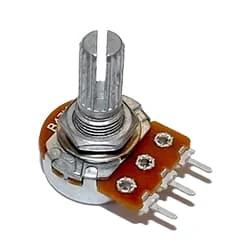Mixer Grinder Wiring Connection:
This diagram shows how to connect Mixer Grinder Wiring Connection. In this circuit diagram, we just try to describe simply how to connect a Mixer Grinder Wiring Connection to house loads like light. This diagram is for Mixer Grinder Wiring Connection. So you can wire your house or office like this diagram very easily. If you want to learn how to connect this circuit clearly you can follow our youtube video link in below.
Mixer Grinder Wiring Connection:
Components Need for this Project:
You can get the components from any of the sites below:
- Universal Motor [See Buy Click Amazon]
- Rotary Switch / Variable Resistor [See Buy Click Amazon]
- Overload Relay [See Buy Click Amazon]
- Inducation Light [See Buy Click Amazon]
- 3-Pin Plug [See Buy Click Amazon]
*Please note: These are affiliate links. I may make a commission if you buy the components through these links. I would appreciate your support in this way!
Read Also:
Components used to make the Mixer Grinder Wiring Connection:
01. Universal Motor
 |
| Fig 2: Universal Motor |
A universal motor is a type of electric motor that can be powered by AC or DC power and uses an electromagnet as its stator to create a magnetic field. The Universal Motor is Structurally Very Similar to a DC Series Motor but Slightly Modified to Operate with AC Power. This type of electric motor is best driven by AC because the field on both sides can be reversed (opposite polarity) together with the current flowing through the coil and armature (and their resulting magnetic field). The resulting mechanical force is independent of the applied voltage and turns in a different continuous direction which is determined by the polarity of the commutator and field coils.
02. Rotary Switch / Variable Resistor
 |
| Fig 3: Rotary Switch /Variable Resistor |
A Variable Resistor is a Type of Resistor Whose Electrical Resistance Value Can be Adjusted On Demand. Variable Resistors are Used in An Electronic Circuit to Adjust Circuit Resistance as a Means to Control The Voltage or Current Within a Circuit. The electrical resistance is Varied by Sliding a Wiper contact Along a Resistance Track. Sometimes the Resistance is Adjusted at a Preset value as Required at the Time of the Circuit Building by Adjusting the Screw Attached to it and Sometimes Resistance can be Adjusted When Required by Controlling The Knob Connected to it.
03. Overload Relay
 |
| Fig 4: Overload Relay Protector |
Overload relays are often used to protect the motor from excessive current flow. Overload relays are used to protect the motor from overheating. Besides some specific faults such as phase to phase, phase to ground, etc. overload relay provides protection to the motor. A thermal overload relay works on the principle of bimetallic strip electro-thermal characteristics. When the bimetallic heats up, the trip function in the overload relay turns on and disconnects the power supply to the contactor coil, thus tripping the overload relay and breaking the motor current and saving the motor.
04. Inducation Light
 |
| Fig 5: Inducation Light |
An electric current Flow Indicator Senses The electrical Current Through an electrical device And produces visible feedback to Indicate Proper Operation. The Current Flow Indicator Has Voltage And Current Regulation Craving First And Second Inputs Connected To The First And Second Conductors, Respectively. This Publication Provides updated Statistics on a Comprehensive Set of social, Economic, Financial, and Environmental Measures as Well as Select Indicators for Sustainable Development Goals.
05. 3-Pin Plug
 |
| Fig 6: 3-Pin Plug |
Many of us mistake a device that receives power through a 3-pin plug as a 3-phase load. Actually, they are single-phase loads and a 3-pin plug is used in these devices to avoid electrical accidents. This type of plug has three pins called 'Live', 'Neutral', and 'Earthing' which are marked by letters 'L', 'N', and 'E' respectively. The three wires to which these three pins are connected are also colored differently. The earth pin is connected to yellow or green, live pin to red or brown and neutral pin to black or blue wire. Among these pins, the earth pin is the longest and thickest.
Thank You for visiting the website. Keep visiting for more Updates


Post a Comment
Do leave your comments